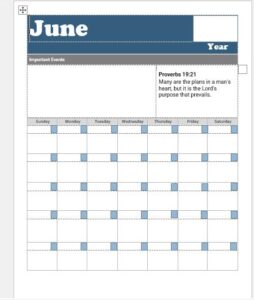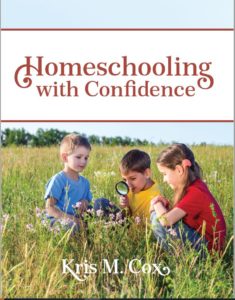Are you feeling stressed about preparing for school this fall? I get it, it feels like a lot to do!
Let me simplify it for you and hopefully take away some of the overwhelm.
9 Simple Steps for Planning Your School Year
Seek guidance from the Lord first!
You don’t need to do this homeschool journey alone! God wants to help and guide you as you plan and prepare for this next school year. As a believer, you have the Holy Spirit indwelling you, guiding you and giving you wisdom. Rest in the Lord and know that you can do this with HIS help!
I will instruct you and teach you in the way you should go. I will counsel you with my loving eye on you. Psalm 32:8
Evaluate and set goals.
What did you and your children like or dislike about last school year?
Do you need to make curriculum changes for any subject?
What routines in your daily life worked and what didn’t?
Do you want to change your yearly schedule?
What godly character traits do you want to help your children develop?
Do you have a ministry you want to do as a family this year?
Set some goals for this next school year for each child and for your homeschool year.
Keep your state’s homeschool laws in mind, considering which subjects the state requires that you teach. You can find this information on your state’s homeschool group’s website or on hslda.org.
Here’s a free evaluation and goal setting form that you can use to set goals for each child and your family.
Schedule a few hours to work on planning each week.
Write it on your calendar!
If you have a lot of children, you may need a couple time slots each week to plan.
If needed, ask your spouse, a family member, or a friend to watch your children for a couple hours each week so you can plan.
Some parents take a whole weekend away with their spouse and plan together. I believe homeschooling needs to be a team effort so this is a great way to make that happen.
Do what works best for you!
Plan to teach your children all together when possible.
It’s timesaving and more enjoyable to teach all your children together for Bible, Social Studies, Science, Music, Art, Health, Foreign Languages, and Physical Education through the elementary and middle school years. Some of these subjects can still be family-taught together into high school as well.
For multi-age teaching, each subject is typically taught using resources at the oldest child’s level, explaining things for the younger children as needed. Assignments appropriate for their age and skill level follow the teaching time.
For example, an older child might do a project or book report, while a younger child might help the older child with a project, or do an easier project, such as coloring a picture or making a lapbook.
Look for a curriculum that will help you teach all your children together; especially in the subjects listed above.
There are many curricula available for teaching multi-ages. (Sonlight, My Father’s World, Heart of Dakota, Simply Charlotte Mason, and most unit studies are a few examples of this.)
Choose curricula for the individualized subjects.
Math and Language Arts are the two subjects that follow a specific scope and sequence. These need to be taught to each child individually unless you have two children at the same skill level.
Understanding your child’s learning style preferences can be beneficial in choosing math and language arts curriculum, especially if they struggle with either one. Download my free informal learning style assessment to learn more about this.
If your child is in high school, you may be buying individual curricula for all or most of the subjects, as their learning tends to become more independent in those years.
Check out my blog post on Choosing Curriculum if you’re feeling overwhelmed with the choices.
Order curriculum & plan for other learning opportunities
If you can get your curriculum ordered by the end of July (at the latest), you’ll avoid the problem of items being out of stock.
Consider used curriculum to save money or go on Facebook and find homeschool swap groups. Here are a couple good used curriculum sites:
Don’t forget to include hands-on learning opportunities such as field trips, co-ops, or games to develop a love for learning in your children. When you strive to make learning fun, your children will be excited for school each day. Our adult children still talk about some of our field trip experiences and they still love playing board games too!
Check out my blog post on Igniting the Joy of Learning for new ideas. Or go to my Recommended page to find game suggestions.
Co-ops, where you join together with other homeschool families to learn, are another fun option to consider for your school year. Most state homeschool groups have a list of co-ops available in your state. In Minnesota, you can go to www.mache.org for co-op listings.
Take time to review curriculum.
After receiving your curriculum, you’ll need to review each one so you know how to use it effectively. Choose one to focus on each week and you’ll feel less overwhelmed. Map it out on your calendar so you’re sure to get through all your curriculum before school starts.
Think through schedules (yearly & daily)
For your yearly schedule, determine when you’ll start your school year, plan for breaks, and decide when you’ll end. Do you want to have four-day or five-day weeks or school year-round?
In planning your daily schedule, think about what time you want school to start each day, then set up a routine or plan for the day.
I recommend starting each school day with family Bible study, devotions, or a character study. This sets the tone for the day and leads to better attitudes. Praying together is also a great way to start the day!
I also highly recommend adding in Delight Directed studies each day. Look for what your child shows great interest in learning and provide the resources for them to learn about it. It’s simple! My blogpost on motivating your child to learn describes what this is and how to incorporate it in your school days.
Check out Growing the Fruit of the Spirit for family devotions. It includes a unit study for children ages 4-12 also.
Some curricula will have a schedule laid out to guide your days. If your curriculum doesn’t have one, review the curriculum and calculate how many units, chapters, or lessons your child will need to complete each day or week to finish the curriculum in a typical school year, which is 180 days or 36 weeks. If you school year-round, your child can work at his/her own pace.
You’ll also need to consider how to divide your time each day for helping your children with individualized studies. Younger children will need your full attention and help, while older children often can work alone some of the time. Having older children help care for and teach the younger children will ease your load and provides them with great experience.
The Homeschool Life All-in-One Planner has several helpful templates for scheduling.
Once children can read well, weekly assignment sheets help students learn to be responsible and manage their time. They also work well for planning and record-keeping purposes. Here’s a free download of the weekly assignment sheet from The Homeschool Life All-in-One Planner.
Integrate your subjects.
Save your children time and energy by having them do projects and reading assignments where they’re learning information for more than one subject.
For example, your child can read a historical fiction book related to the time-period you’re studying in history and they’re doing history and language arts. Have them write a research paper for language arts that is on something they’re studying in science, history or Bible. It’s okay to cover more than one subject with a project or reading assignment.
Unit studies or Charlotte Mason curriculum typically integrate subjects well. Notgrass History also incorporates history, language arts, and Bible in their program.
Here’s a free chapter on JOY from Growing the Fruit of the Spirit, a Bible-based Unit Study so you can try a unit study if you’ve never done one before.
If you’re planning your own studies, download this free planning sheet to help you integrate the subjects your children will study.
Keep your eyes fixed on Jesus, you can do this with His help!






